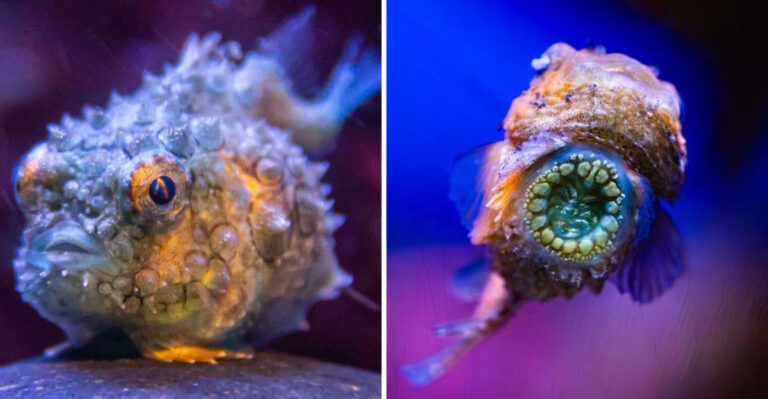14 Bizarre Insects You’ve Never Heard Of And How They’re Changing Science
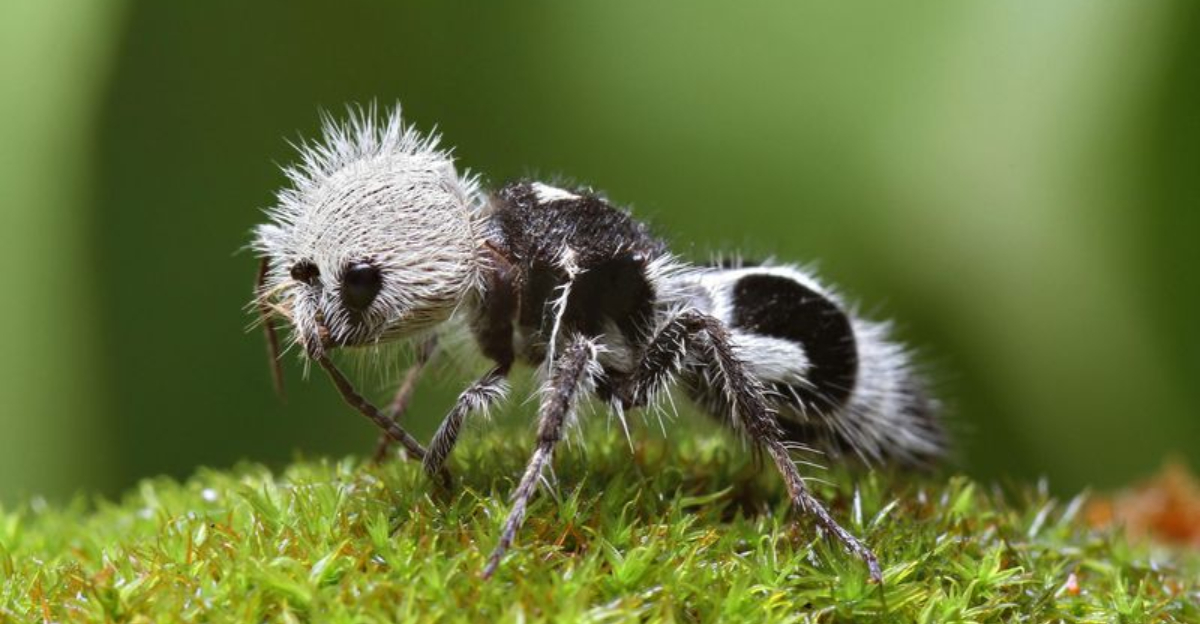
The insect world hides incredible creatures that most of us will never see. Beyond familiar bees and butterflies exists a realm of bugs with abilities that seem straight from science fiction.
Scientists are discovering these unusual insects hold secrets that could revolutionize medicine, technology, and our understanding of evolution. Get ready to meet some truly strange six-legged wonders that are pushing the boundaries of scientific discovery.
1. Zombie Ant Fungus
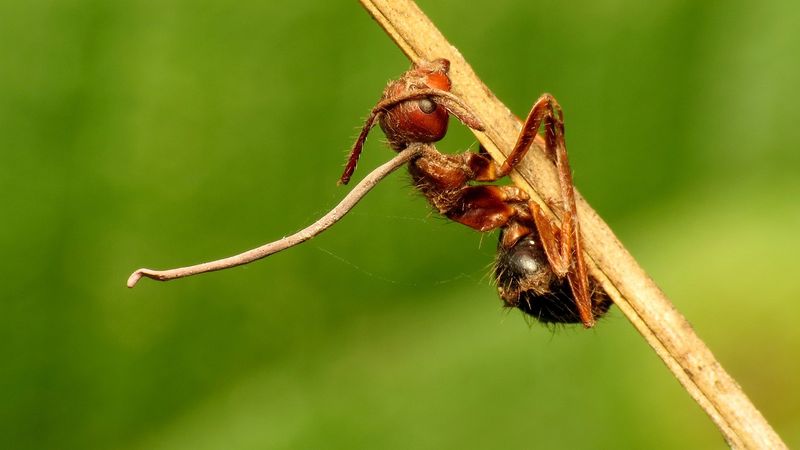
This parasitic fungus hijacks ants’ brains, forcing them to climb plants and clamp onto leaves before dying. The fungus then bursts from their heads to rain spores onto unsuspecting ants below.
Scientists studying this mind control mechanism have discovered chemicals that might help treat Parkinson’s disease and other neurological disorders. The fungus’s ability to target specific neural pathways has revolutionized our understanding of brain manipulation.
2. Bombardier Beetle
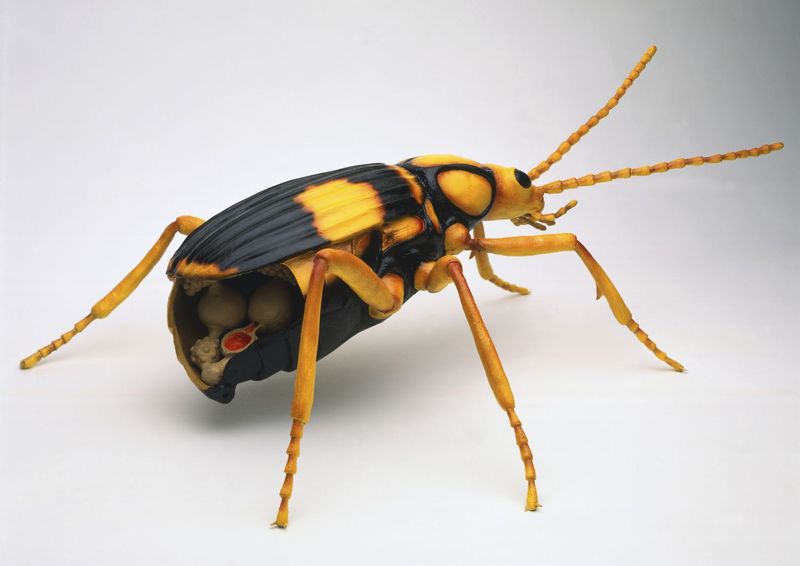
Imagine having a built-in chemical weapon! The bombardier beetle mixes hydrogen peroxide and hydroquinones in a special chamber in its abdomen. When threatened, it releases this explosive cocktail at predators, creating a boiling hot spray.
Engineers at MIT have studied this beetle’s defensive mechanism to develop better fuel injection systems and spray technologies. The beetle’s precise control over chemical reactions has inspired new approaches to controlled combustion in various industries.
3. Giant Isopod
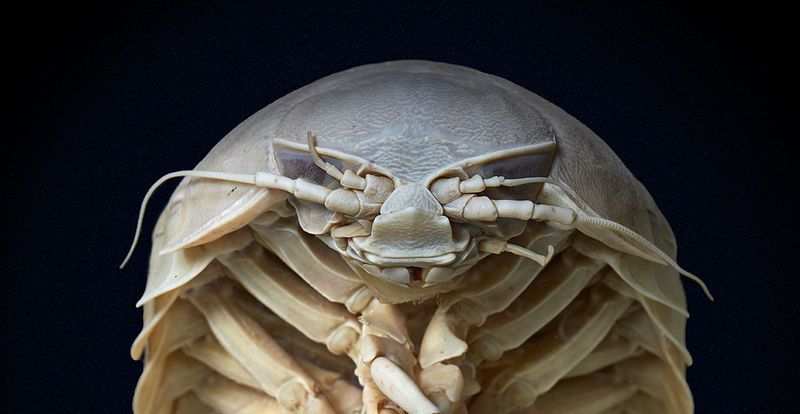
Looking like something from another planet, these deep-sea relatives of pillbugs can grow to the size of a football. They survive crushing ocean pressures and can go years without eating.
Their remarkable digestive systems and pressure-resistant bodies have helped scientists understand extreme environment adaptation. Biomedical researchers are studying their unique proteins to develop pressure-stable medications that could revolutionize drug delivery systems for human patients.
4. Assassin Bug
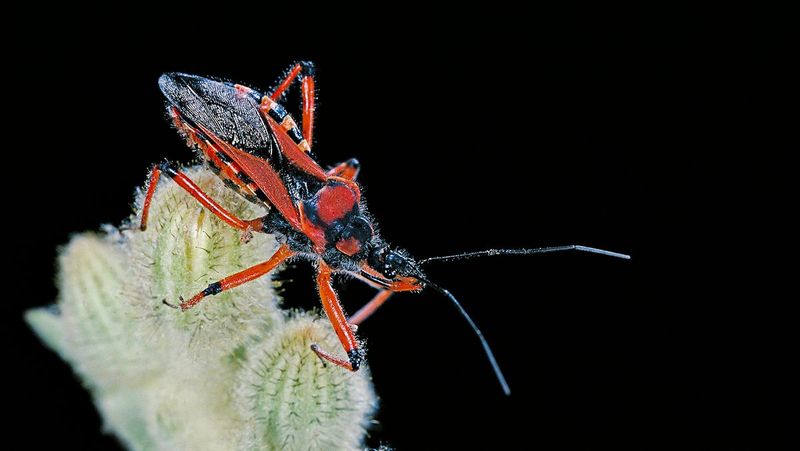
With a name straight from a thriller novel, these insects are nature’s vampires. They inject victims with paralyzing saliva and digestive enzymes that liquify their insides, then slurp up the resulting soup.
Medical researchers have isolated compounds from their saliva that show promise as anticoagulants and pain relievers. The precise chemical cocktail these bugs produce could lead to breakthrough treatments for blood clots and chronic pain conditions.
5. Dinoponera Giant Ant
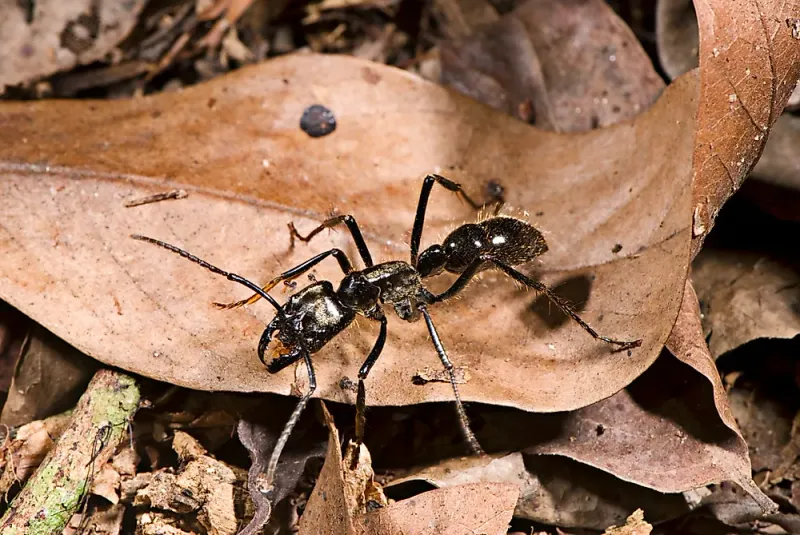
South America’s bullet ant delivers the most painful insect sting known to science. Some indigenous tribes use these ants in coming-of-age rituals where young men must endure multiple stings without crying out.
Neuroscientists study their venom to understand pain pathways in the human nervous system. The unique peptides in their venom have led to breakthroughs in pain management research and could eventually help develop non-addictive alternatives to opioid painkillers.
6. Jewel Wasp
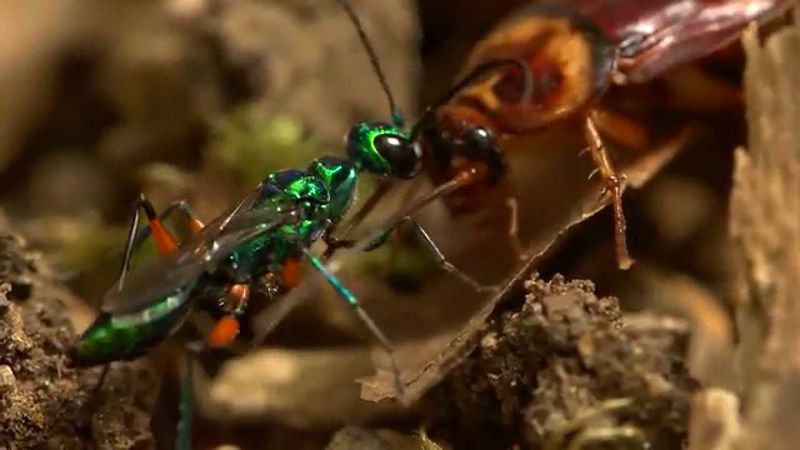
The emerald jewel wasp performs precise brain surgery on cockroaches. It stings directly into specific ganglia, turning roaches into zombies that willingly follow the wasp to its nest to become living food for wasp larvae.
Neurobiologists have mapped exactly how the wasp’s venom affects cockroach brains. This research has provided unprecedented insights into neural control systems and could potentially help develop targeted treatments for human brain disorders.
7. Hercules Beetle

Male Hercules beetles sport enormous horns longer than their bodies. They can lift 850 times their weight, making them proportionally stronger than any other animal on Earth.
Materials scientists study their exoskeletons to create stronger, lighter building materials. The beetle’s unique horn structure has inspired designs for construction equipment that can support massive weight while remaining lightweight and energy-efficient.
8. Giraffe Weevil
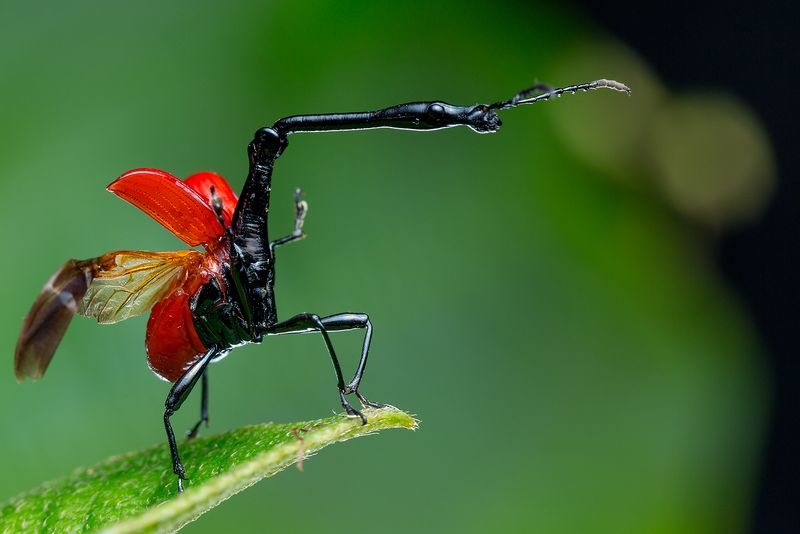
Madagascar’s giraffe weevil has an absurdly long neck that makes up two-thirds of the male’s body length. Males use these necks in wrestling matches to win mates, rolling rivals off branches in spectacular insect sumo matches.
Robotics engineers study their unique neck joint mechanics to design flexible robots. The weevil’s combination of strength and flexibility has inspired new approaches to robot arm design that could revolutionize manufacturing and surgical assistance technology.
9. Trap-Jaw Ant

Trap-jaw ants possess the fastest-moving predatory appendages ever recorded. Their mandibles snap shut at up to 140 mph, so fast they’re practically invisible to the human eye.
Engineers have studied the spring-loading mechanism in their jaws to design faster, more efficient machines. The unique biological catapult system has inspired innovations in robotics, particularly for devices requiring rapid, precise movements in fields from manufacturing to microsurgery.
10. Panda Ant
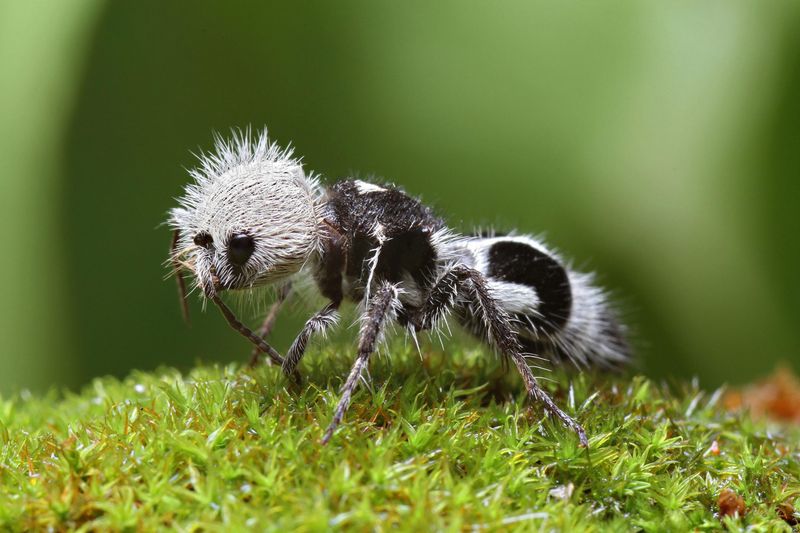
Despite its adorable name and fuzzy appearance, the panda ant is actually a wingless wasp with one of the most painful stings in the insect world. Its striking black and white coloration warns predators to stay far away.
Biochemists study their venom for potential new antibiotics. The unique peptides in their sting have shown remarkable effectiveness against antibiotic-resistant bacteria, potentially offering new weapons in our fight against superbugs that threaten public health.
11. Treehopper
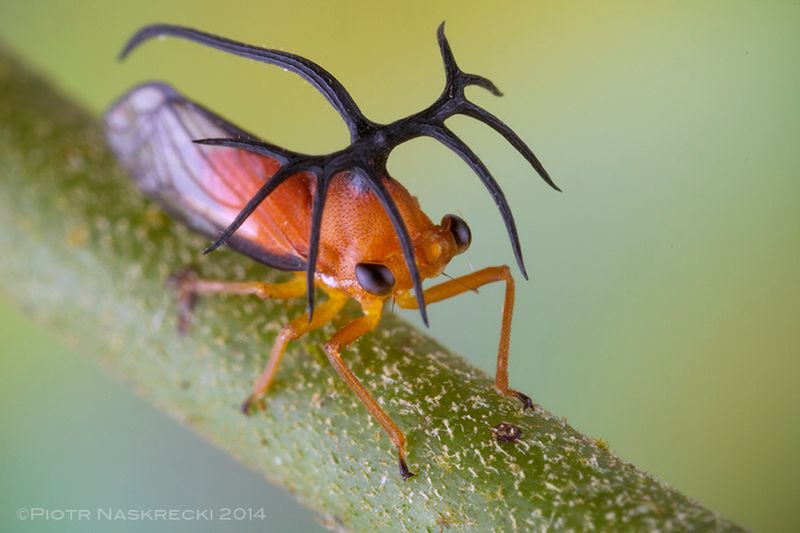
With a back that features bizarre, horn-like protrusions, the Treehopper could be mistaken for a thorn or leaf, a brilliant form of camouflage. Found in various regions, this insect’s strange appearance has led to studies on plant mimicry and adaptation.
Treehoppers have fascinated scientists with their symbiotic relationships with ants, exchanging protective services for honeydew. This mutualism showcases the complex interactions within ecosystems and the evolutionary benefits of cooperation.
12. Assassin Spiders
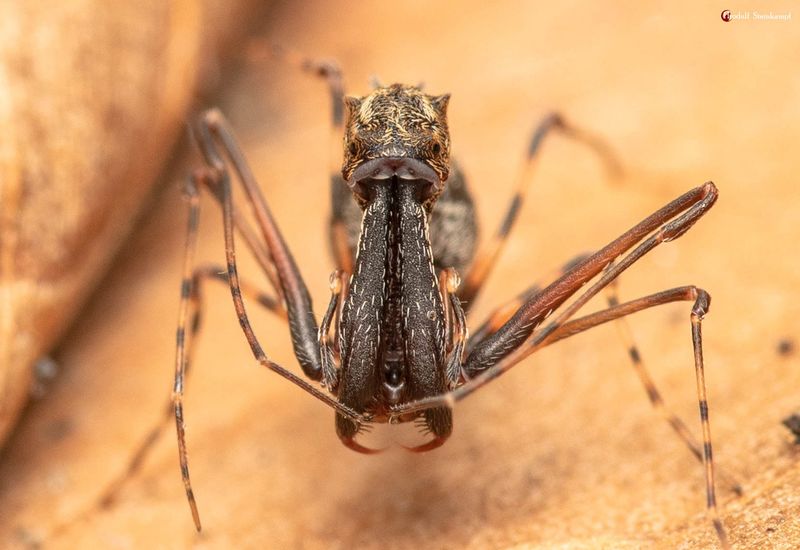
These bizarre arachnids have necks and jaws extended on long stalks, making them look like something from a science fiction movie. They specialize in hunting other spiders, using their extended necks to keep prey at a safe distance.
Evolutionary biologists study them to understand specialized predator adaptations. Their unique hunting strategy has provided insights into predator-prey coevolution and has applications in designing targeted pest control methods that minimize ecological disruption.
13. Harlequin Beetle
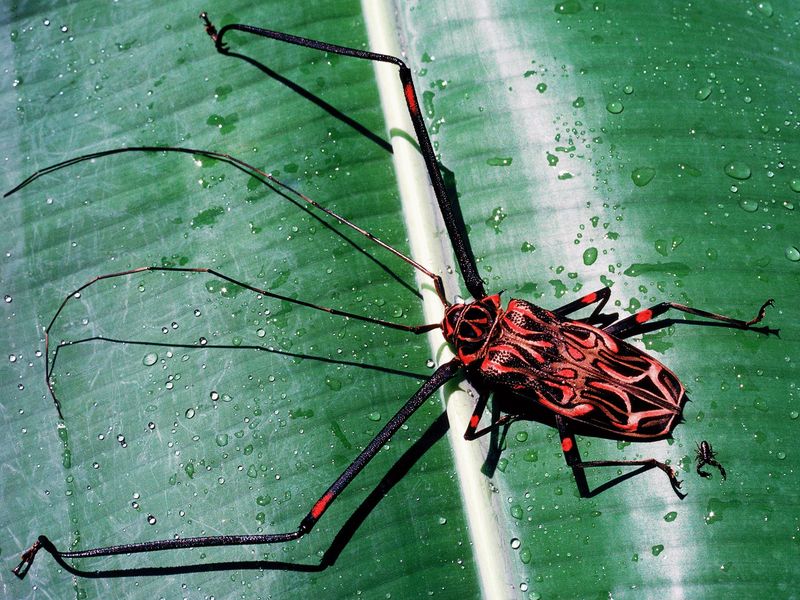
The male harlequin beetle grows front legs three times longer than its body. These gangly appendages help it fight rivals and impress females in the tropical rainforests of Central and South America.
Mechanical engineers study their leg joints for insights into structural stability. The beetle’s ability to support and maneuver with disproportionately long limbs has inspired designs for construction cranes and robotic arms that can extend farther while maintaining precision and stability.
14. Scale Worm
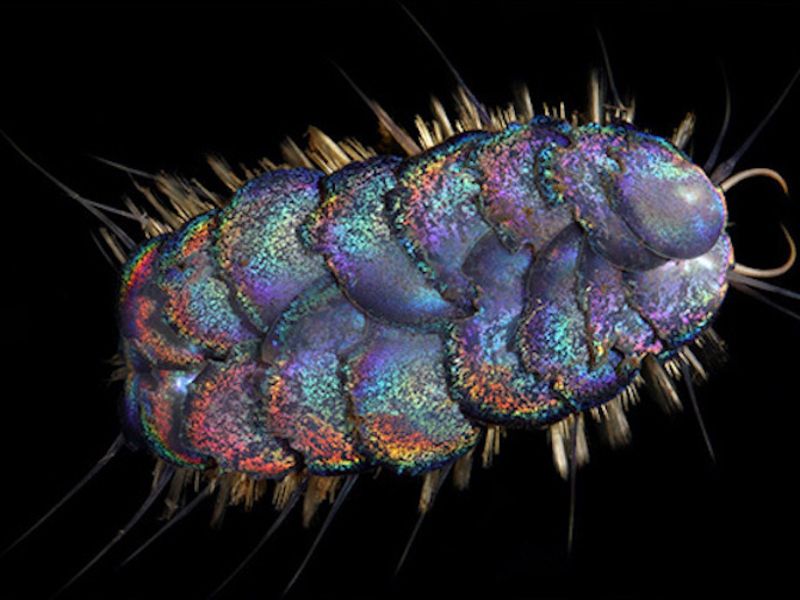
Deep in the ocean live scale worms covered in metallic-looking plates that shimmer like armor. Some species even emit brilliant blue light when disturbed, creating an underwater light show.
Materials scientists study their scales to develop better protective coatings. The unique structure of these scales has inspired new types of flexible armor for military and medical applications, combining protection with mobility in ways traditional materials cannot match.

